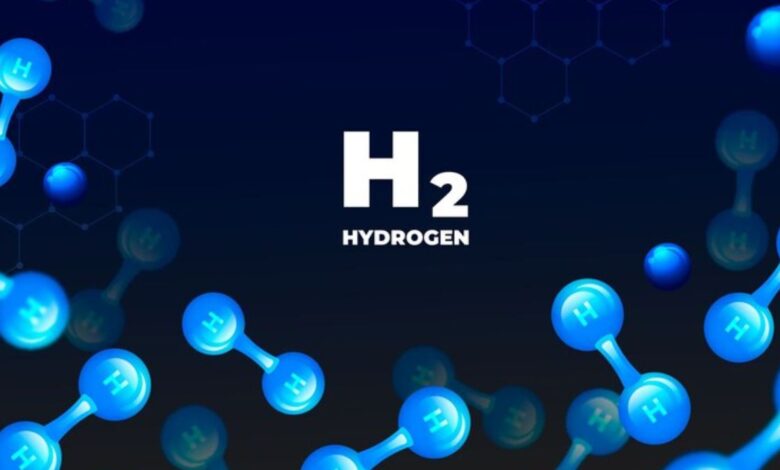HCOOCH CH2 H2O: Ester Hydrolysis Process Explained

Ester hydrolysis is a key chemical reaction in organic chemistry, where an ester reacts with water, breaking down into its constituent alcohol and acid components. In this process, the ester group (HCOOCH), which is a functional group found in many organic compounds, reacts with water (H2O) to form products such as alcohol (CH2OH) and carboxylic acid (HCOOH). Understanding this process is fundamental in both industrial applications and laboratory experiments.
The importance of water as a solvent cannot be overstated in ester hydrolysis reactions. Water’s polar nature allows it to effectively facilitate the breakdown of chemical bonds, making it an ideal medium for ester hydrolysis. Whether it’s for the synthesis of alcohols or the breakdown of esters in biochemical processes, water plays a vital role in these reactions.
What is Ester Hydrolysis and How Does It Work in Water?
Ester hydrolysis is a chemical reaction in which an ester is broken down into its respective alcohol and acid in the presence of water. In simple terms, when water is added to an ester (such as HCOOCH), it reacts to produce alcohol (CH2OH) and a carboxylic acid (HCOOH).
The Chemical Reaction: Ester + Water → Alcohol + Acid
The basic chemical equation for ester hydrolysis is:
Ester (HCOOCH) + Water (H2O) → Alcohol (CH2OH) + Carboxylic Acid (HCOOH)
This reaction involves the breaking of the ester bond, facilitated by the polarity of water molecules. The oxygen atom in the water molecule acts as a nucleophile, attacking the carbonyl carbon in the ester, leading to the formation of an alcohol and an acid. This process is also referred to as acid-catalyzed hydrolysis when an acid is used to speed up the reaction.
Water as the Ideal Solvent for Ester Hydrolysis
Water’s polarity makes it an excellent solvent for ester hydrolysis. The positive hydrogen atoms in water can interact with the negatively charged oxygen atoms in the ester bond, while the lone pairs on the oxygen atoms in water help break the ester bond. As a result, water is indispensable in facilitating the ester hydrolysis reaction.
The Chemical Mechanism Involving HCOOCH CH2OH and Water
When the ester group HCOOCH interacts with water (H2O), the reaction takes place in two key steps:
- Nucleophilic Attack: The oxygen atom in water (H2O) attacks the carbonyl carbon of the ester (HCOOCH), creating a tetrahedral intermediate.
- Cleavage and Formation of Products: The intermediate decomposes, breaking the ester bond and yielding CH2OH (the alcohol) and HCOOH (the carboxylic acid). This process is a typical example of ester hydrolysis, where water cleaves the ester bond and produces alcohol and acid.
This reaction is reversible, and under certain conditions, the hydrolysis can be accelerated by either an acidic or basic environment.
Key Components in Ester Hydrolysis: HCOOCH and CH2OH
The Ester Group (HCOOCH): A Key Player in Chemical Reactions
The ester group (HCOOCH) is a fundamental functional group in organic chemistry, consisting of a carbonyl group (C=O) bonded to an alkoxy group (O-CH2OH). Esters are common in many natural and synthetic compounds, such as fats, oils, and fragrances. In ester hydrolysis, the ester group reacts with water to break apart into simpler molecules, making it crucial for both organic reactions and biochemical processes.
Hydroxymethyl Group (CH2OH): The Alcohol in Ester Hydrolysis
The alcohol produced in ester hydrolysis is CH2OH, commonly known as hydroxymethyl. This alcohol group is part of many organic compounds, and when ester hydrolysis occurs, it provides a valuable source of alcohol for various industrial and laboratory applications. Hydroxymethyl alcohol (CH2OH) is used in the production of solvents, plastics, and resins.
Why is Water Crucial for Ester Hydrolysis?
Water plays a pivotal role in ester hydrolysis by acting as the solvent that facilitates the breakdown of esters. The polar nature of water molecules allows them to interact with the ester bond, making it easier for the ester to split into its constituent alcohol and acid.
The Role of Water as a Solvent
Water molecules surround the ester molecule, breaking down the bonds between atoms in the ester group. The partial negative charge of oxygen in water interacts with the positively charged regions of the ester, helping to weaken the ester bond and allowing for the hydrolysis to occur.
Polarity and Its Impact on Ester Breakdown
The polarity of water makes it an excellent solvent for polar compounds like esters. Water molecules can dissolve and stabilize the products of ester hydrolysis, such as alcohol and carboxylic acid, ensuring the reaction proceeds efficiently.
Solubility of Organic Compounds in Water
For ester hydrolysis to occur effectively, both the ester and the products (alcohol and acid) must be soluble in water. The solubility of these organic compounds in water is enhanced by the polar nature of the molecules. HCOOCH, CH2OH, and HCOOH are all polar compounds, which makes their dissolution in water essential for the reaction’s progress.
The Process of Esterification and How It Relates to Hydrolysis
Esterification is the reverse process of ester hydrolysis. In esterification, an alcohol reacts with a carboxylic acid to form an ester and water. Understanding esterification is crucial for comprehending ester hydrolysis, as these two processes are often linked in organic synthesis.
What is Esterification?
Esterification occurs when an alcohol, such as CH2OH, reacts with a carboxylic acid, forming an ester like HCOOCH and water. This reaction is typically catalyzed by an acid and is widely used in organic chemistry to synthesize esters.
Linking Esterification and Hydrolysis
The relationship between esterification and hydrolysis is simple: esterification forms esters, while hydrolysis breaks them down. Understanding this relationship is key for controlling chemical processes in industrial applications, such as the production of fragrances, plastics, and pharmaceuticals.
Ester Hydrolysis Conditions: Temperature, pH, and Catalysts
Ester hydrolysis is influenced by several factors, including temperature, pH, and the presence of catalysts. These factors can significantly affect the rate and efficiency of the hydrolysis process.
How Temperature and pH Affect Ester Hydrolysis
Higher temperatures typically accelerate the ester hydrolysis process by increasing the energy of the water molecules and making the ester bond easier to break. The pH of the solution also plays a crucial role; ester hydrolysis often occurs more rapidly in acidic or basic environments.
Use of Catalysts in Hydrolysis Reactions
Catalysts can be used to speed up ester hydrolysis reactions. Acidic catalysts (such as sulfuric acid) can increase the reaction rate by helping to break the ester bond, while basic catalysts (like sodium hydroxide) can also aid in the hydrolysis process by acting as a nucleophile.
Common Applications of Ester Hydrolysis in Organic Chemistry
Ester hydrolysis is widely used in both industrial and laboratory settings. It has numerous applications in the synthesis of alcohols, carboxylic acids, and other organic compounds.
Synthesis of Alcohols and Carboxylic Acids
Ester hydrolysis is a key reaction in the production of alcohols and carboxylic acids. By breaking down esters, valuable products such as hydroxymethyl alcohol (CH2OH) and formic acid (HCOOH) can be synthesized for use in various industries.
Hydrolysis in Industrial Chemical Processes
Ester hydrolysis is used extensively in the chemical industry to produce chemicals, pharmaceuticals, and polymers. The breakdown of esters in water helps create key components in the production of biodegradable plastics, solvents, and detergents.
Hydrolysis of Common Esters in Water
Ester hydrolysis is not limited to HCOOCH. Many other esters, such as methyl acetate and ethyl acetate, undergo similar reactions in water, producing alcohols and acids. Understanding the conditions for these reactions helps chemists optimize production processes in various industries.
Summary of Ester Hydrolysis and its Importance in Organic Chemistry
Ester hydrolysis is a critical reaction in organic chemistry, enabling the breakdown of esters into alcohols and acids. Understanding the role of water in ester hydrolysis helps optimize chemical processes in industries ranging from pharmaceuticals to plastics. This reaction is essential in both laboratory experiments and industrial applications for the synthesis of valuable organic compounds.
FAQs
What happens when HCOOCH reacts with water?
When HCOOCH reacts with water, it undergoes hydrolysis, producing CH2OH (hydroxymethyl alcohol) and HCOOH (formic acid). This reaction breaks the ester bond between the alcohol and acid groups.
Why is water important in ester hydrolysis?
Water is crucial in ester hydrolysis because its polarity helps break the ester bond by interacting with the ester molecule, facilitating the formation of alcohol and carboxylic acid.
What are the typical conditions for ester hydrolysis in water?
Ester hydrolysis is typically carried out in either acidic or basic conditions. Temperature, pH, and catalysts can significantly affect the reaction rate and efficiency.
Can ester hydrolysis occur without a catalyst?
Yes, ester hydrolysis can occur without a catalyst, though the reaction may be slower. Catalysts like acids or bases can accelerate the reaction.
What is the difference between esterification and hydrolysis?
Esterification is the process of forming an ester from an alcohol and a carboxylic acid, while hydrolysis is the reverse process, breaking down the ester into its components—alcohol and acid—using water.




One Comment